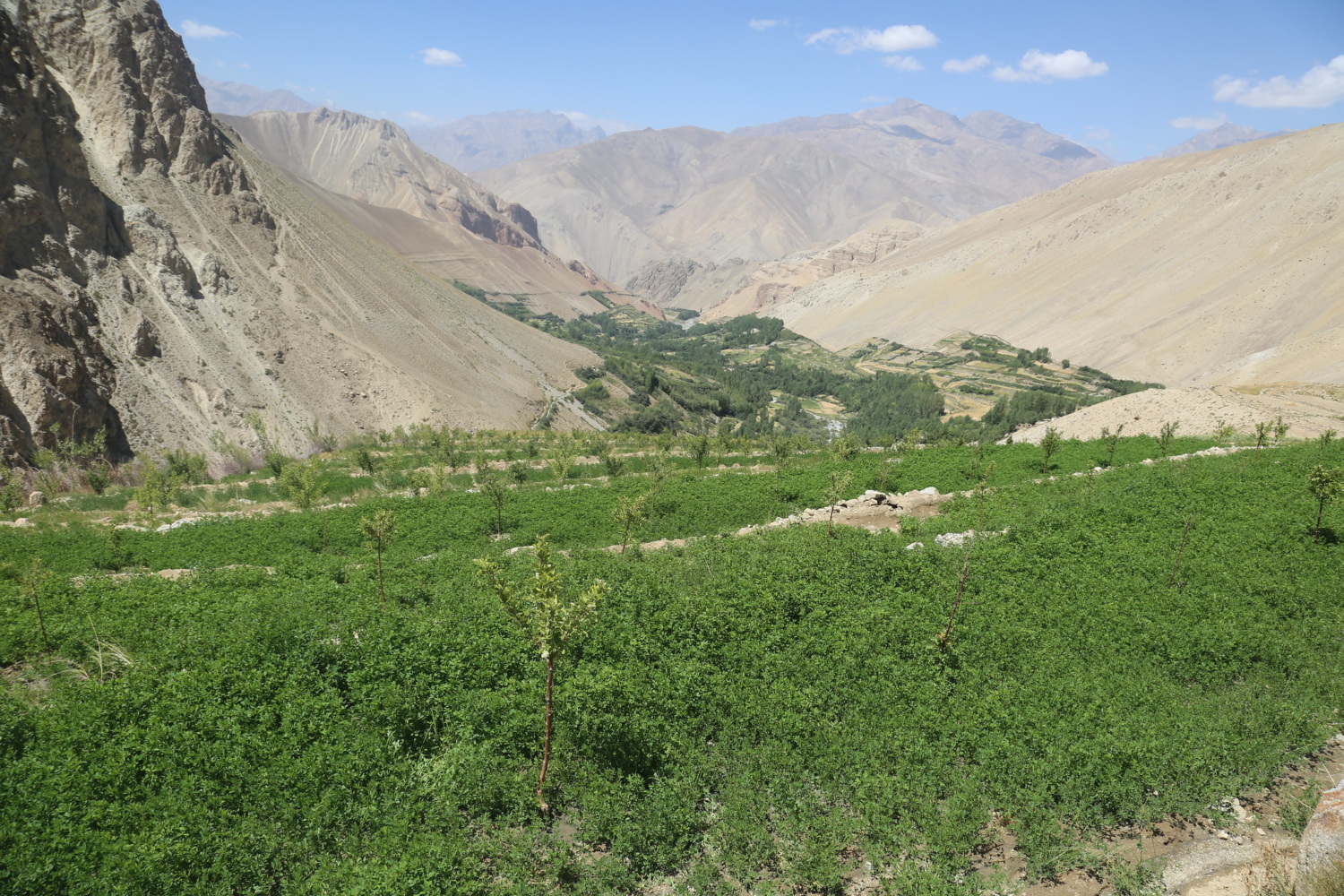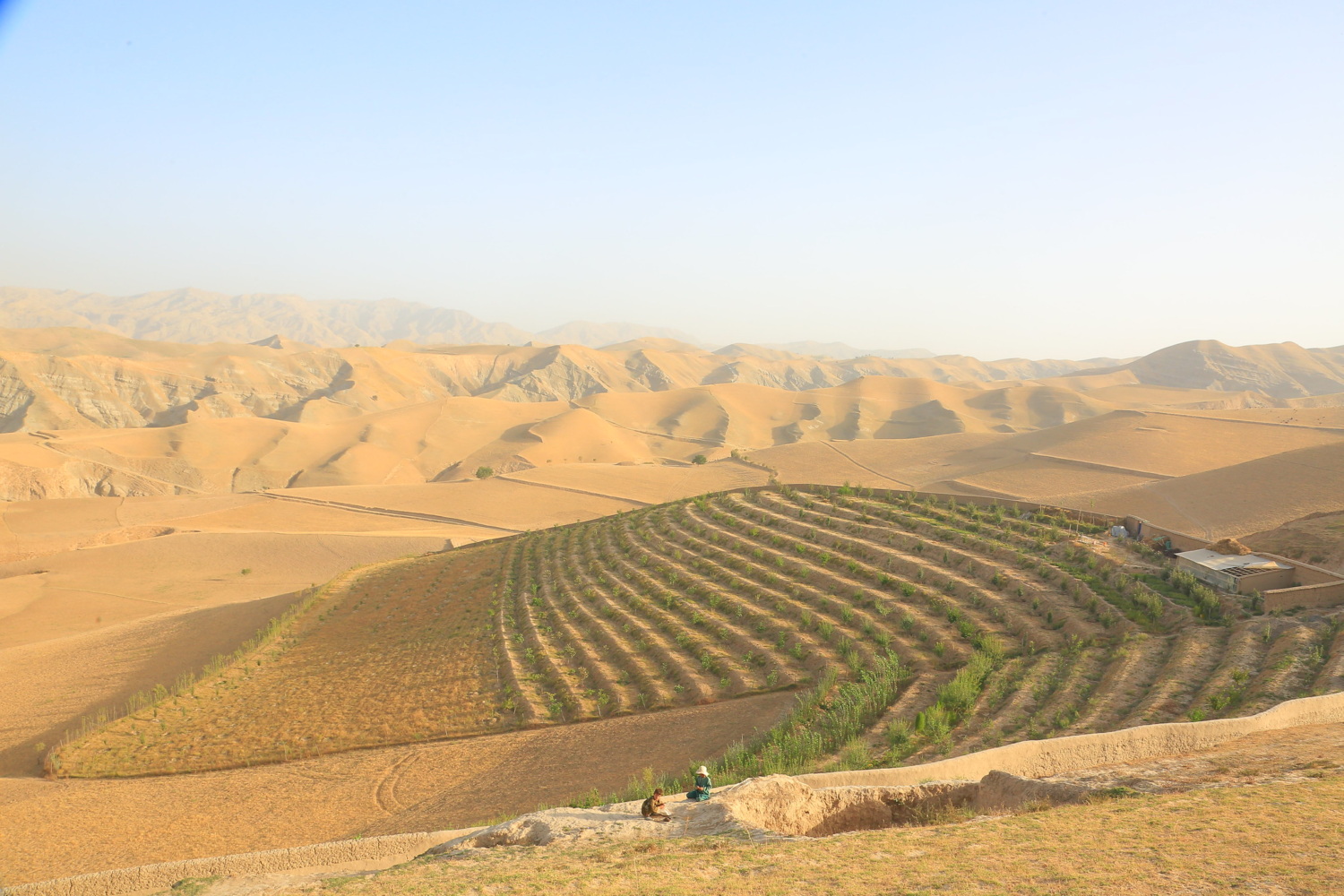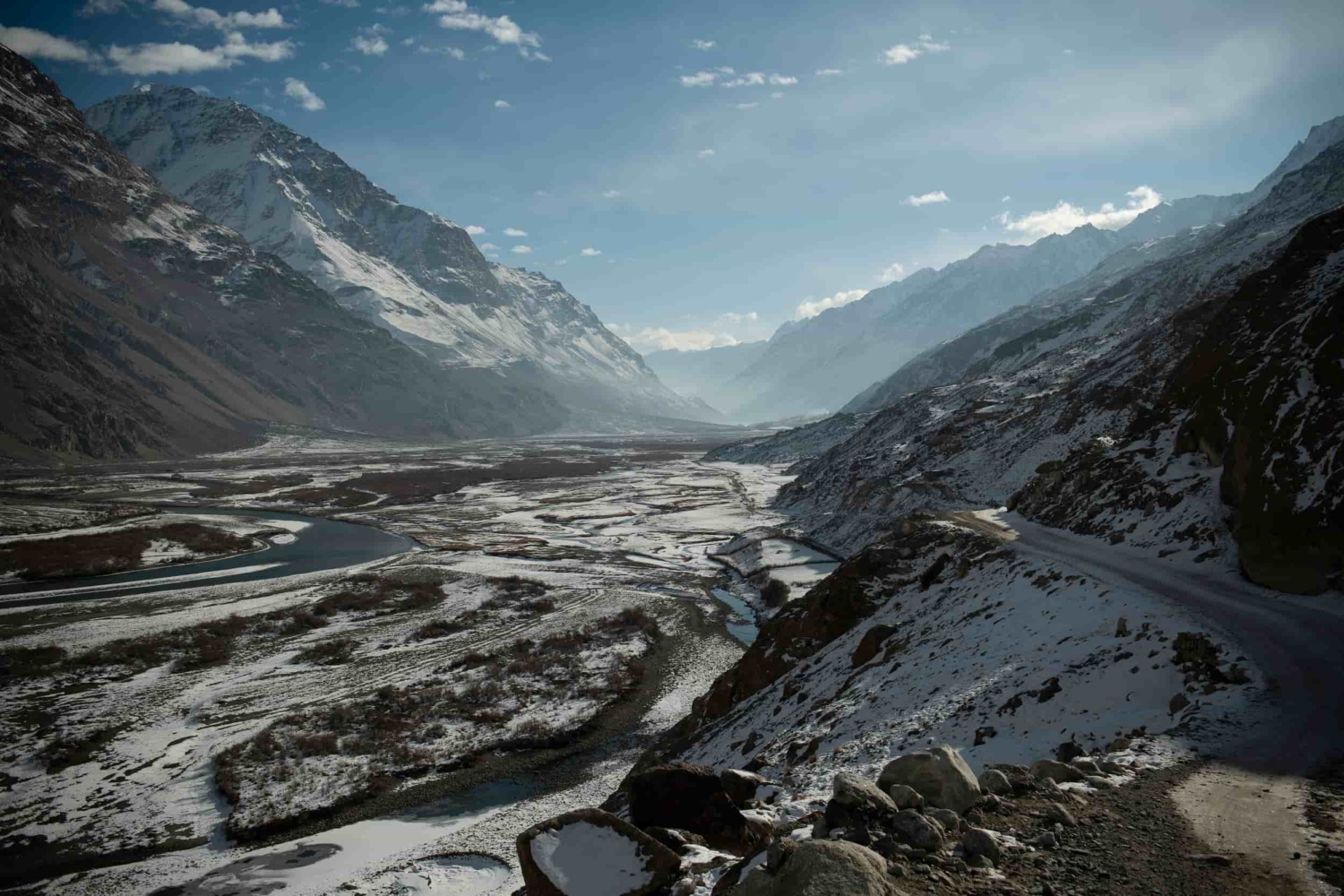
The melting of the snowpack and glaciers in the mountains…
is impacting the flow of rivers and meltwater for irrigation and drinking purposes. These changes in rain and snow patterns are damaging farmers’ work, worsening food insecurity, malnutrition, and disease, and contributing to six million people now living on the brink of famine.
The people of Afghanistan currently face the world’s largest and most severe humanitarian crisis. No fewer than 29 million people, more than two-thirds of the country’s total population, are reliant upon humanitarian assistance for their survival. More than three million children and 840,000 pregnant and nursing mothers suffer from acute malnutrition, one of the highest rates in the world.
Despite most of the country’s major rivers originating in the central highlands, erratic precipitation and the amount and shifting timings of snowfall means less water is available. Water sources from melting ice in the mountains have dried up, leaving hillsides dry and bare, their native and medicinal trees and plants extinct. To make matters worse, environmental degradation has caused widespread soil degradation and the loss of topsoil. This has limited crop production and the amount of carbon the Earth can sequester.
All of this in a country which has contributed only 0.03 percent to total global CO2 emissions.
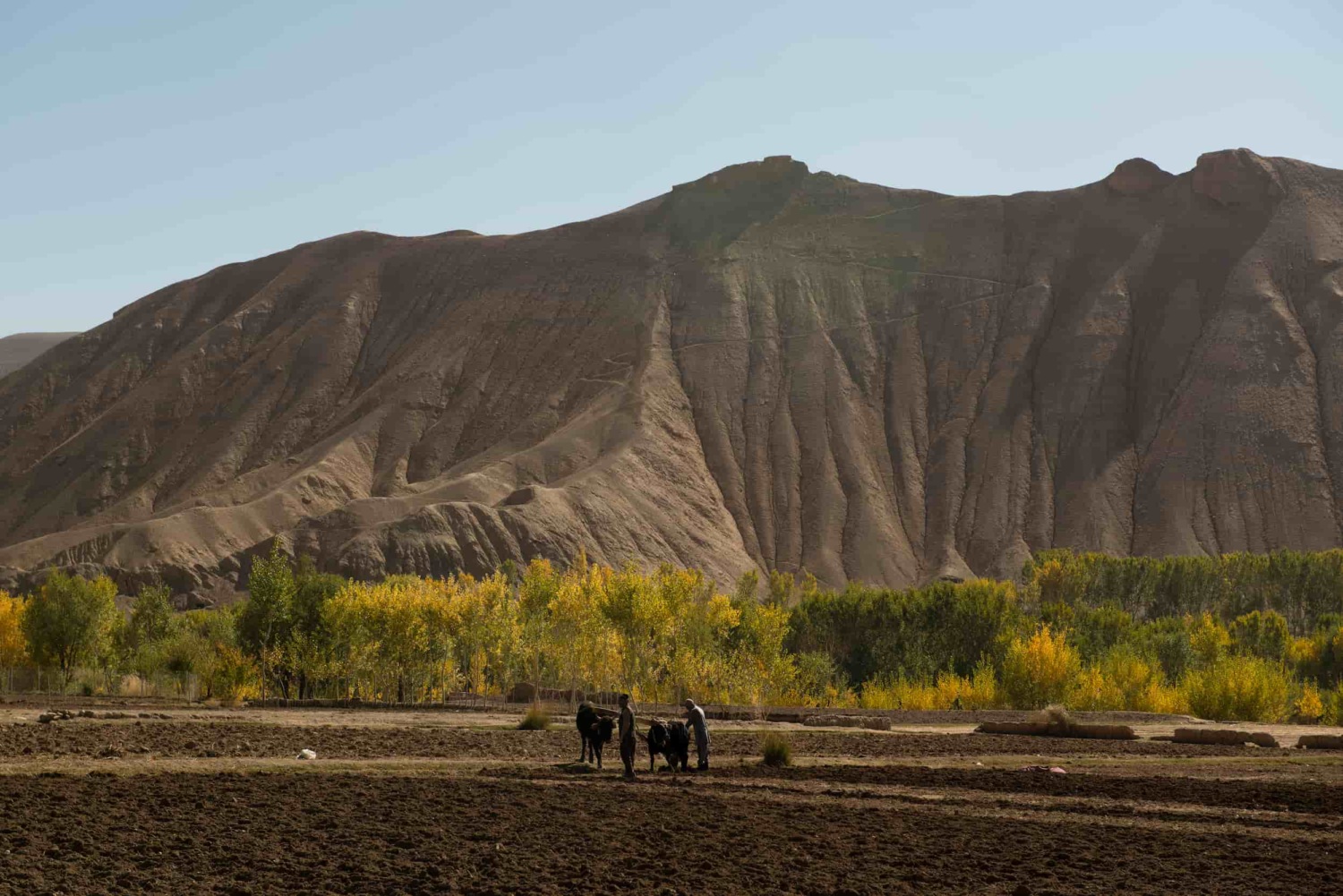
The families and a younger generation of Afghans are leading to positive changes.
In northeastern Afghanistan, the most remote, underdeveloped part of the country, lies Badakhshan Province. It is largely composed of temperate grasslands, savannas, shrublands, and open woodlands along the Pamir River. Pistachio, almond, walnut, apple, juniper, and sagebrush are common across the province, which hosts the highest mountain in the country at nearly 7,500 meters in the spectacular Hindu Kush range.
This is where Home Planet Fund’s program is located.
This is also where frontline Indigenous communities have always had the knowledge to fortify, conserve, and restore their lands and waters against these climate-induced shocks.
Small, locally planted forests maximize tree density and biodiversity, restore the environment and sequester carbon. These are called micro-forests. No larger than a hectare, they each host at least 25 different species of trees.

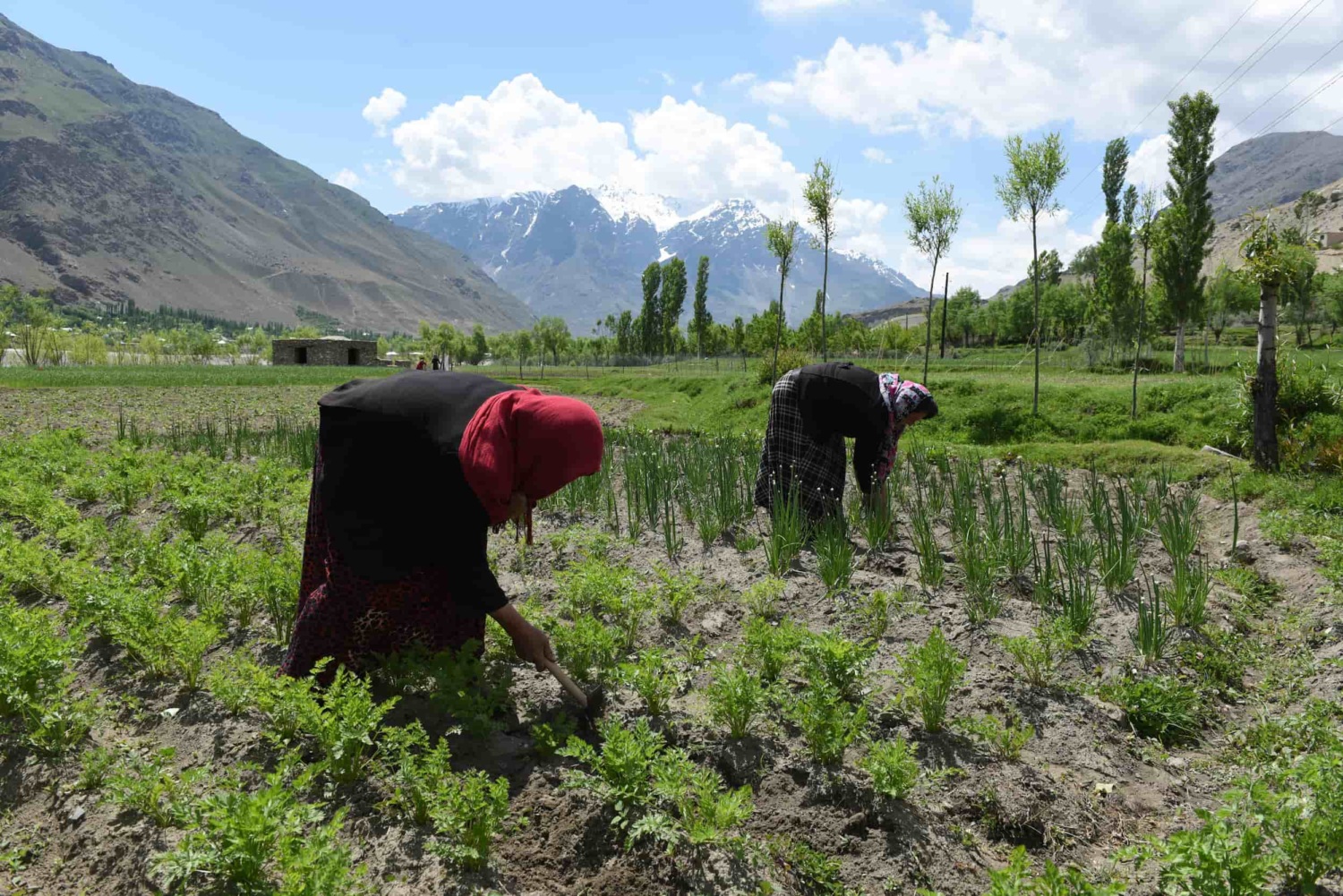
Combining traditional knowledge and horticultural systems with best-practice forestry management, these original nature-based solutions are being employed by the targeted families and younger generations of Afghans to protect endemic and indigenous species, along with the growth of consumable and medicinal plants.
More than 223 micro-forests led by and primarily benefiting resource poor households with small landholdings adjacent to their home, where families can easily work together, have already been established, with a goal of creating another 400 by 2030. Along with this, further community-based reforestation projects are set to address forest degradation.
The project, located in Badakhshan province, Afghanistan, focuses on restoring degraded landscapes and enhancing resilience through community-driven watershed management and localized solutions. By supporting the traditional views of people in the local communities as active participants and custodians of nature, the initiative aims to promote sustainable ecosystems, address water scarcity, and improve household incomes through sustainable natural resource use. Women here have always had an important role in agriculture and maintaining communal lands, including decisions about how to allocate harvests for family food stocks and selling to local markets.
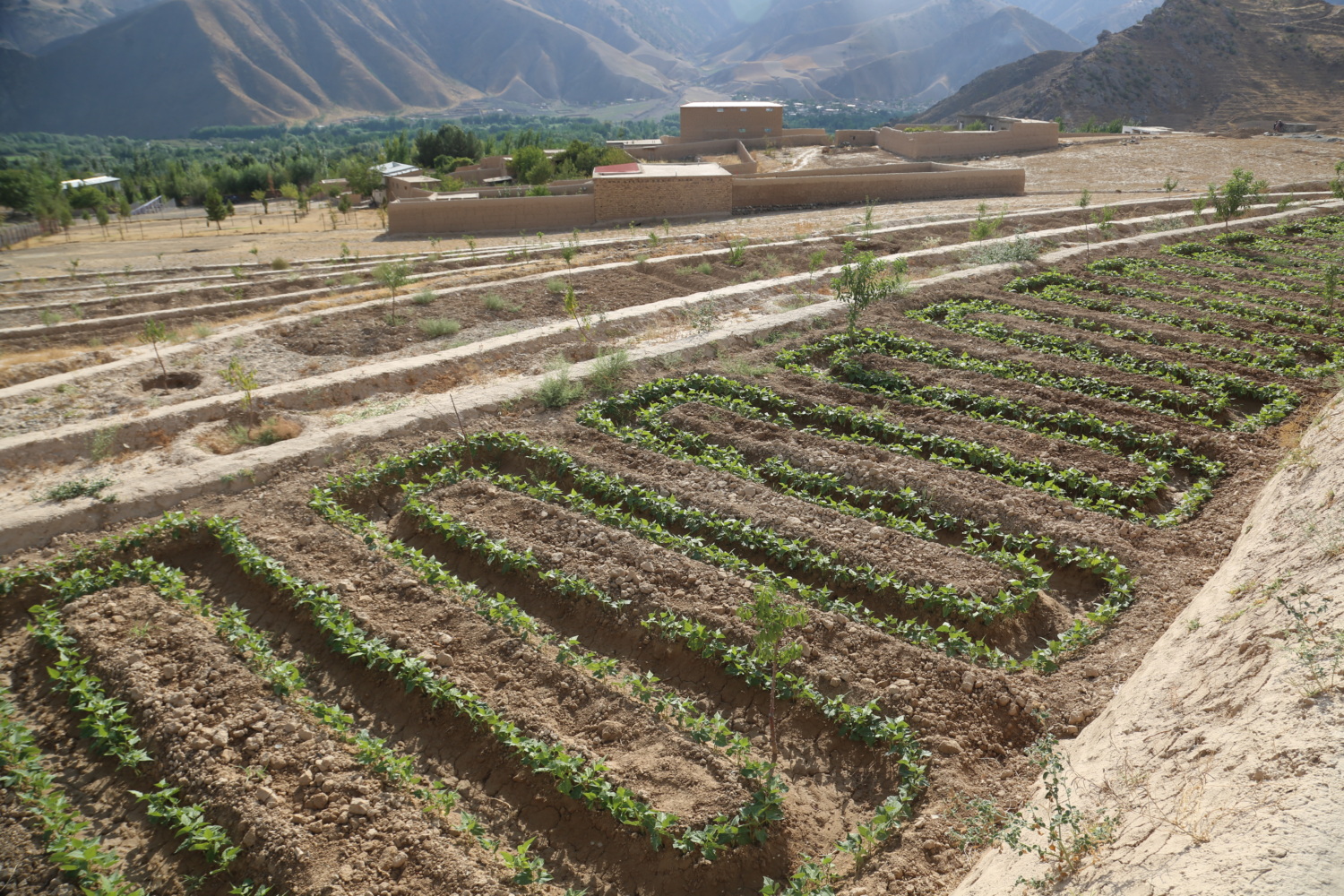
Reforestation brings cooler temperatures and increased carbon sequestration…
which can begin to slow the melting of the snowpack and glaciers in the high mountains. In this way the work is protecting the “third pole,” the largest area of glaciers and permafrost outside the polar regions, of which Afghanistan is a border country, along with Home Planet Fund’s partners in Tajikistan which sits across the northern border.
Home Planet Fund recognizes the critical importance of doing everything possible to slow the melting of the glaciers and icefields within the third pole, given that more than two billion people rely on its water for drinking, agriculture, and their economies.
Along with supporting the creation of more micro-forests, our partners are working to bolster the efforts of farmers and communities to adapt their agriculture to new climatic conditions. This includes the creation of alternative livelihood opportunities through community-based climate adaptation by developing village resilience plans, improving the governance of natural resources, food preservation to reduce post-harvest losses to enable greater food security during lean harvests, and reducing the risk to increasingly severe environmental degradation.
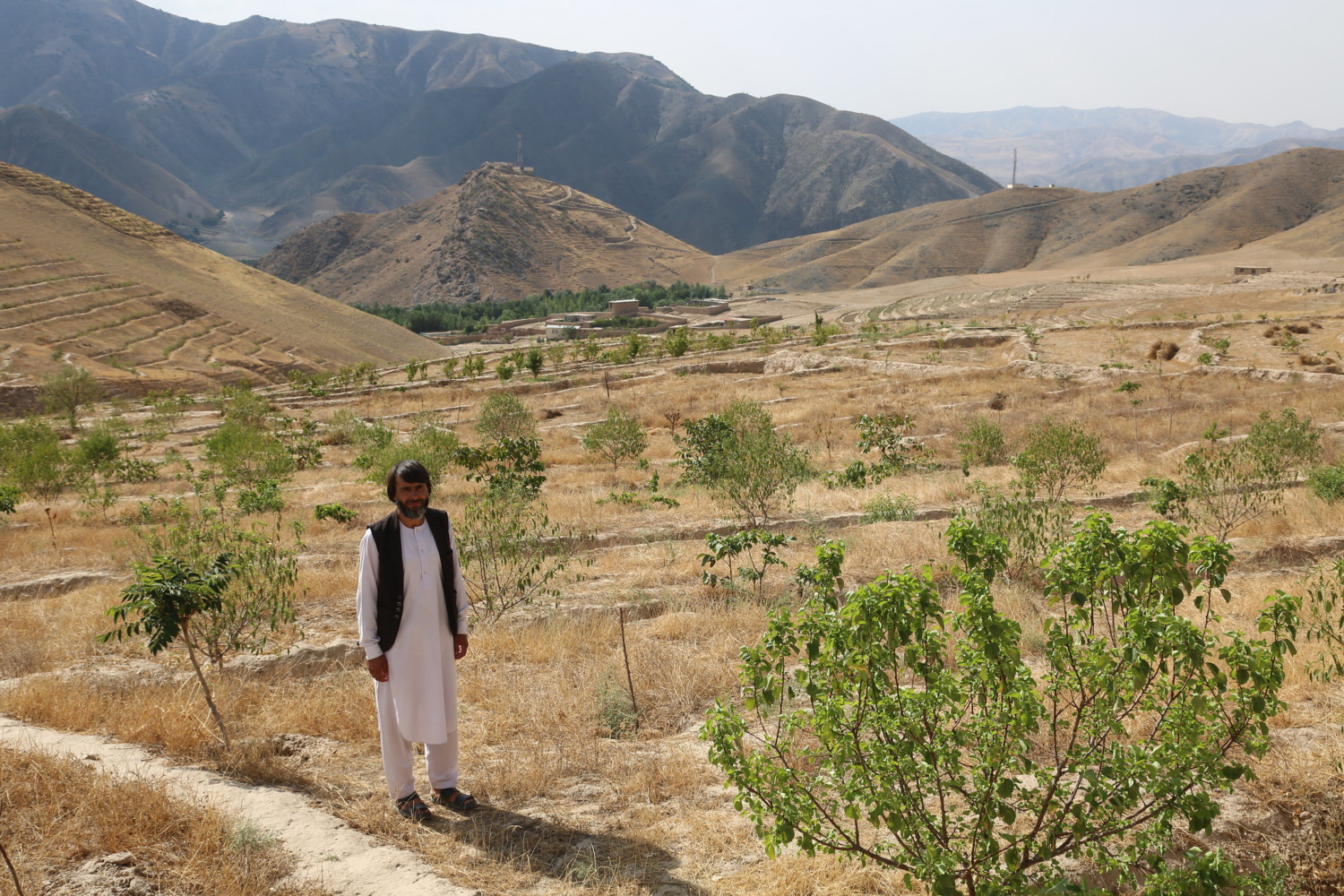
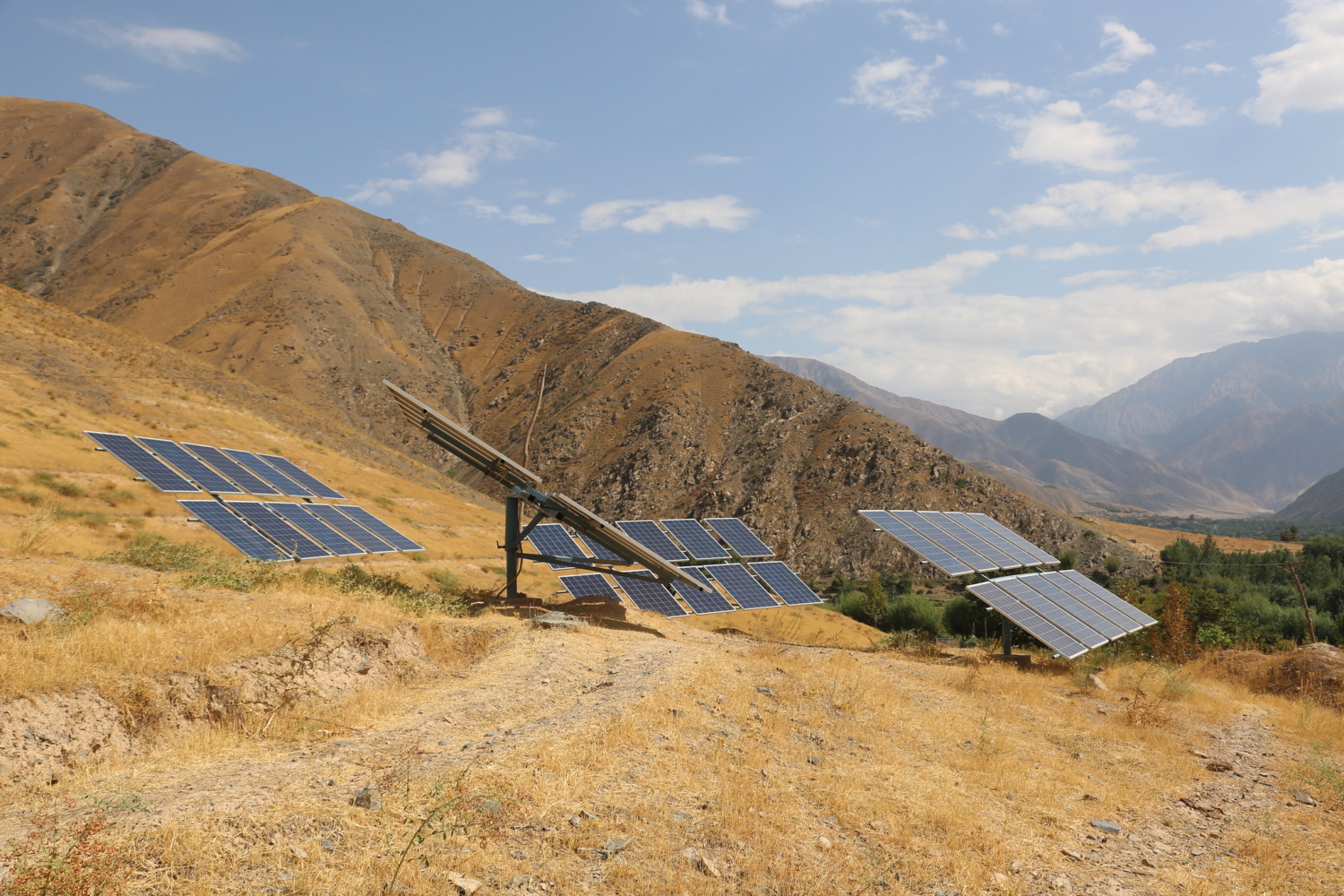
Our partners’ work is enhancing biodiversity.
They are planting indigenous trees and plants with high carbon-capture capacity, such as willow, pillar, jida, hawthorn, currant, and berberis, all of which thrive in mountainous communities. These plants enable communities to mitigate environmental degradation such as flooding when established near riverbanks, prevent wind erosion of land, sequester carbon, and provide sources of food, medicine, and income.
Resilience plans also include increasing regenerative agriculture practices, soil restoration for carbon capture, and strengthening health and education systems to build community resilience. Nurseries are also being used to preserve seeds, increase crossbreeding of plants, and to attract pollinating insects. They also function as living laboratories for crop cultivation techniques that do not use chemicals. All of these are run by the families and younger generations of Afghanistan.
Community irrigation schemes to implement and expand wise water use are already underway. The mountainous geographies of Afghanistan and Tajikistan are within the same ecosystem that was divided between the Russian and British empires 150 years ago long the Panj/Amu Daryo river. This area has historically been called Badakhshan, or Pamir, and the people are Pamiri. Pamiri are ethnic, linguistic, and religious minorities who are Indigenous to these mountains. This is why the traditional approach to water management found in both countries is being used: the utilization of a mirab, (usually a respected elder), who is accountable for irrigation maintenance, balanced by a mirju who maintains adequate and equitable use of water within villages.
Afghan youth are now taking an active role in learning more of their traditional cultural heritage, and where it intersects with climate adaptation and mitigation strategies and thus are becoming included in climate solutions for their country.
Even in places like Afghanistan that are fraught with challenges, Home Planet Fund is committed to doing everything possible to serve those who have always been serving the Earth.
Home Planet Fund is proud to be partnering with Aga Khan Foundation on this work.
